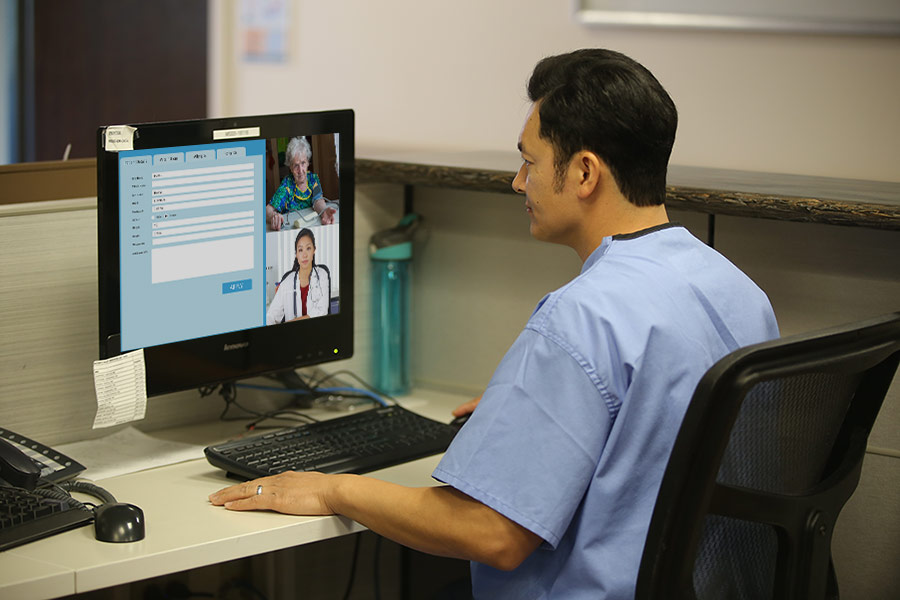My elderly father has been experiencing an uncontrollable tremor in his hand for a number of years. Initially, he went to a local neurologist that was conveniently located. The neurologist experimented with one drug after another, each producing worse side effects than the one before, without providing relief of my father’s symptoms. It became clear that I needed to get my dad to a leading specialist in motor based neurological disorders and found one in Dr. Fahn at Columbia Medical University across the river in NYC.

Why Does Someone Else Own Our Medical Records?
Getting the appointment was difficult since Dr. Fahn is in high demand. But I never would have suspected that the long pole in getting my dad the care he needed would be extricating his medical record from the local neurologist’s office in New Jersey. The process involved the patient (or in my case, family caregiver) to go between the offices to gather contact information and fax numbers and manually fill out forms that had to be delivered to the local neuro’s office. Then I had to follow up to ensure that the records were received, and it is good that I did, because they weren’t the first time. Or the second time. Finally, on the third attempt, three MONTHS after the process began, my father’s records were with the care provider we needed to see in order to learn that he had been misdiagnosed and never should have been given the medications that he had been taking for his condition.
The experience made me realize just how inverted our system is with regard to patient records. Why do we think it is okay for a healthcare system, one of many health service agents of the patient, to own and control access to the patient health record? Shouldn’t the record live with the patient, and shouldn’t the patient provide permission to his or her health service agents to access and update?
Access and ownership of the patient record was the subject of one of the many engaging unconference topics at Vidyo’s Healthcare Summit in Nashville. A multi-disciplinary group of care providers, technology solution providers (including EHR system manufacturers), and patients passionately discussed this topic, examining potential solutions to the problem and the challenges to be addressed with each.
The question posed was, “who would provide and maintain the system for producing, managing and securely sharing the health records?” One attendee reminded the group that the original Clinton healthcare reform proposal sought to have a single government hosted Health Information Exchange (HIE). Aside from several people not feeling comfortable with “big brother” controlling the system that hosts their personal health information, the fact of the matter is that the HIE approach has historically led to fragmented, and in some cases duplicated, records. This is because records were being generated by disparate systems with different data structures. So the first take away was that there is a need for standardization of data structure as it is highly unlikely that we would ever get to a world where all records are created and stored from a single platform.

Unconference group members weigh the challenges of patient owned medical records.
We then explored the potential of the personal health record system being offered by private sector tech giants like Google or Amazon, with the patient showing up at a care provider facility (in-person or virtual via telehealth) and providing token based access to the service provider. Physicians could then update the patient record directly within a web browser. The challenge raised was that providers would have to learn multiple user interfaces for documentation purposes (again, assuming that the world will never all reside on a single platform). The take-away here was the need for a standardized user experience across platforms for a core set of documentation functions and then differentiate on value add capabilities.
Provision of the solution by private sector companies raised the question of economics for the patient. The group generally agreed that for mass adoption of the platform to take place there would need to be some form of a freemium offering. It was suggested that artificial intelligence in a free package model could include suggestions with regard to products and services that could help with the diagnosed condition. The platform provider could provide premium targeted placements for sponsors with those suggestions (properly marked as paid ads) as form of monetization.
This raised the issue of ethics and the security of data warehoused in the system. While some members of the group felt strongly that such an approach would undermine consumer confidence in the system’s ability to ensure privacy, others felt this isn’t much different than what Google and Facebook do today with private emails and internet searches. As long as proper disclosure and terms of use are provided, along with a paid option to disable “smart suggestions,” the group concluded there would be little resistance, particularly by millennials.
We then explored what would happen if a patient decided to relocate where their personal health record. Here we agreed that there would need to be a unique record identifier, similar to a phone number or social security number, that would be used to uniquely associate the record with the patient. This type of a solution would require legislation to ensure the unique number stays with the individual for life, even if one were to switch providers. The analogy used was local number portability for mobile phones.
The session concluded with a big picture vision of what healthcare would be like if we were able to effectively transition ownership of the record to the patient. We envisioned an open market approach to healthcare, where the patient could effortlessly take services from any generalist or specialist via telehealth or in-person, without the risk of the clinician not having the full context of a patient’s health history. This would transform emergency care practice. It would eliminate one of the critical barriers to urgent care telehealth delivery today, by providing a full history for every patient that comes through the doors of the ED or clicks to connect with a care provider.
Recent Comments